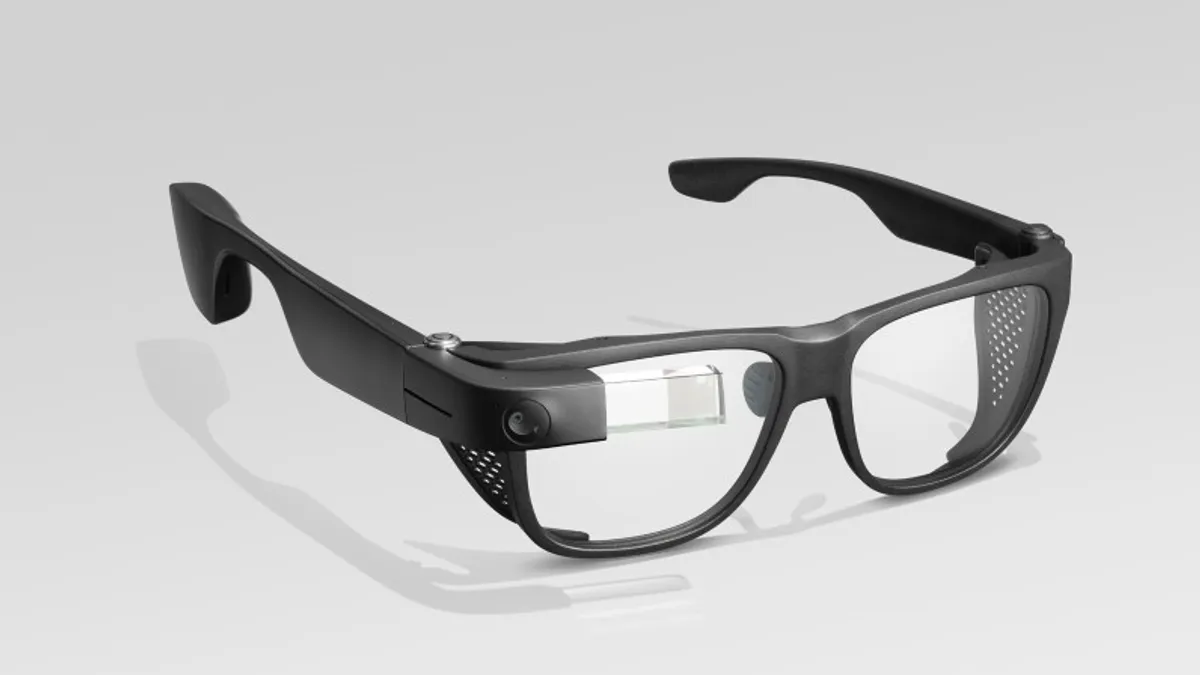Dive Brief:
- DHL is expanding its augmented reality (AR) based "vision picking" program to its warehouses worldwide using the latest version of Google's smart glasses, the third-party logistics provider announced in a press release. The warehouses already participating in the program have seen worker productivity increase by 15%.
- The vision picking pilot program launched in 2015 and uses smart glasses to give workers a heads up display that enables them to locate, scan, sort, and move inventory without needing a handheld scanner or referencing hard-copy forms. DHL leadership says that workers participating in global pilots have embraced the program and are able to pick faster and with fewer errors than before.
- The program's global expansion is part of DHL's comprehensive digital supply chain strategy that currently includes using wearables, drones, autonomous vehicles and other technologies to enhance warehouse and delivery operations.
Dive Insight:
After a pilot phase, the vision picking program will expand to larger logistics hubs including airports in New York City, Cincinnati and Chicago. The program will be based on the latest version of Google Glass Enterprise Edition — smart glasses with an integrated heads-up display that overlays key parcel information, scans barcodes, and relays instructions in real time.
"The possibility of object recognition is also particularly promising for us in industrial applications," Markus Voss, COO and CIO of DHL Supply Chain said in a press release. "With the corresponding software, it is no longer just possible to read out barcodes, locate products and display the corresponding storage compartment; in [the] future, also complex objects can be identified with the smart glasses."
A recent report from logistics firm Zebra Technologies predicts that wearable technologies will be in 90% of global warehouses in the next ten years. DHL has been in line with this trend and has been expanding a variety of programs aimed at integrating ring scanners, smart watches, AR and autonomous technologies into its workers' and customers' day to day lives over the past five years.
As technology improves and users become more efficient, the increasing incorporation of wearables and process automation could reduce the need for human labor.
So far, DHL has said that its workers have embraced the vision picking program as it has allowed them to do their jobs more efficiently and, as Voss mentioned, get some additional help with more complex tasks going forward.















